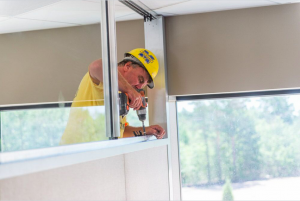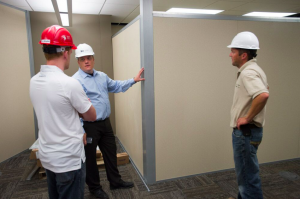
 Diverting construction and demolition debris from disposal in landfills and incinerators is a top priority for green-minded designers. According to the United States Environmental Protection Agency (EPA), the residential and commercial building industry generates over 136 million tons of waste annually. The Leadership in Energy & Environmental Design (LEED) rating system calls for the diversion of up to 95 percent of non-water-soluble and nonhazardous materials from disposal. These include steel, glass, brick, concrete, asphalt roofing material, pipe, gypsum wallboard, and lumber, the latter two of which comprise the largest portion of landfilled materials.
Diverting construction and demolition debris from disposal in landfills and incinerators is a top priority for green-minded designers. According to the United States Environmental Protection Agency (EPA), the residential and commercial building industry generates over 136 million tons of waste annually. The Leadership in Energy & Environmental Design (LEED) rating system calls for the diversion of up to 95 percent of non-water-soluble and nonhazardous materials from disposal. These include steel, glass, brick, concrete, asphalt roofing material, pipe, gypsum wallboard, and lumber, the latter two of which comprise the largest portion of landfilled materials.
Waste is created due to errors in design and specifications, and by construction or demolition activities. Specifying products that contain high percentages of post-consumer recycled materials and those that can be repurposed for multiple uses increases the sustainability of a building’s design and reduces the probability for unnecessary disposal into the waste stream. But how do we motivate design professionals to decrease waste?
Certainly, LEED has been a guiding light in the area of construction-related waste management. The rating system awards certification credits based on the percentage of waste that is redirected from landfills. Furthermore, points may be earned under the LEED system by using recycled and sustainable materials and for maintaining low quantities of non-hazardous waste throughout the construction process.
Beyond LEED, the benefits of utilizing a waste diversion plan for your building project are multifold, but the reduced costs for hauling and disposal of excess material wastes is the paramount advantage. Waste can be minimized by simply purchasing fewer materials and by planning carefully for the repurposing of specified materials. Including Tranquil Systems’ demountable walls in your design plans is a direct means to minimizing material waste. Tranquil Systems’ products have an extended life cycle due to their reusability—our field-fit assembly means that installers can easily modify our components to conform with on-site requirements during the initial installation, and as future demands require reconfiguration. Tranquil Systems brings affordability and flexibility to interior spaces while reducing construction debris through the production of our Access, Seclusion and Adapt demountable walling systems.
 Waste diversion planning brings increased revenue, reduced client costs, and less waste headed to the landfill. Proper planning and coordination between the building owners, architects, designers, and facility and construction managers guarantees that waste diversion goals will be met. Of course, every building project will inevitably result in some amount of waste being sent to the landfill, but reducing the impact that our construction projects have on the environment is an ethically sound choice that amounts to measurable outcomes for future generations.
Waste diversion planning brings increased revenue, reduced client costs, and less waste headed to the landfill. Proper planning and coordination between the building owners, architects, designers, and facility and construction managers guarantees that waste diversion goals will be met. Of course, every building project will inevitably result in some amount of waste being sent to the landfill, but reducing the impact that our construction projects have on the environment is an ethically sound choice that amounts to measurable outcomes for future generations.